
Fast Track the ROI of your Website Portfolio with Conversion Optimization
So.
You’ve managed to build an amazing operations and SEO team for your website portfolio.
All your main SEO keywords are on the front page or inside the top 3.
You take websites to fully-fledged businesses in under a year.
You know with certainty that you can increase any website’s revenue month after month without fail.
But.
Your starting to see diminishing returns for your SEO and content producing efforts.
This is the point where I tell you:
“There is a way out of this pickle you’re in.”
I know that deep down you know this. Or else, you wouldn’t be reading this blog.
But, you’ve been putting it aside.
Today is the day I give you permission to step out of the dark and step into the wonderful world of conversion rate optimization.
I’ll show you how we work with website investment firms.
I’ll show you how we help them increase the revenue potential of their portfolio of websites.
And, as an example, I’ll show you the process we followed to increase the revenue for three of sites in different niches.
You will see what a wonderful marriage SEO and CRO is.
Source: Authority Hacker
After reading this post, you’ll you’ll start to optimize your sites and reap all the benefits that come with it.
Let’s jump right in and let me introduce you to yellowHEAD, a website investment company that we have been working with for the last couple of years.
Table of Contents
- About yellowHEAD
- Where does Convertica fit into this?
- Site 1: Hobby niche
- Site 2: Sports niche
- Site 3: Parenting niche
- What can you learn from these 3 sites?
- Can you see what I’m getting at here?
- Conclusion
Who is yellowHEAD?
yellowHEAD is a team of digital marketing experts that provide holistic marketing solutions. They perform a host of digital marketing services from media buying to SEO. They also manage web property investment portfolios.
We’ve worked with them on many sites.
Today, let me use as examples just three of the sites they’ve acquired that we worked with.
A few simple CRO tweaks and we increased revenue for their investors in a short period of time.
Where does Convertica fit into this?
We work with website investment firms in two ways.
First, we evaluate the potential of a site they want to acquire.
We assess how spot-on the site’s conversion optimization is.
Why? Because when a site has had minimal CRO, you know there’s a lot of growth possibilities.
Secondly, once they have bought a site, we go in to optimize the conversion for quick wins and longer-term revenue increases.
Because we already have systems and processes in place, we can help them achieve their monetary goals in a quicker manner than waiting for SEO to kick in.
Here’s how we increased revenue for three of their websites in different niches.
Website 1: Site in the hobby niche and quick wins
If you’re familiar with Convertica, you know we like quick wins.
And that always starts with a site audit.
It doesn’t matter the niche or the size of the property. A site audit sees to it that you’re not just pulling rabbits out of thin air when you test. But that you have a solid reason for any optimization you take on. This way you maximize the test’s success potential.
The first thing we do is investigate elements above the fold.
Over 80% of your visitors will only see this section. So work on it first.
This hobby site already had tables on money pages.
That’s great!
However, it lacked some clarity. It didn’t give any compelling information to convince the visitor to click the link.
Listen:
Just having a comparison table is not enough.
You need to sell that link!
You can do this by adding a features and benefits column, for example. Or information on which product is best suited for a particular demographic.
Because we’ve done hundreds of comparison tables before, we have become so good at deciding what type of table fits the niche and the site’s theme.
Which was the case with this one.
So upon getting instructions to optimize the table, our developers went to work to design a suitable one for both mobile and desktop.
And then we put it to the test:
And guess the results of this optimization after 3 weeks?
We increased AD fees by 19.2% against the original design.
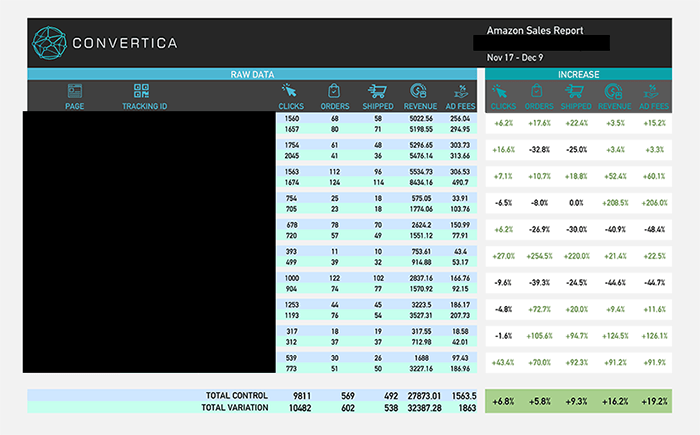
Think about that for a second.
In 3 weeks, our new comparison table made 19.2% more than the old design.
Not a bad way to get your client’s investment off the ground, huh?
And that’s in less than a month.
How long would it take for your SEO efforts to work and increase your site’s revenue by that much?
A lot longer, I would guess?
And yet with CRO, all you have to do is add a properly designed comparison table.
Just a few tweaks, and you increase the value of the site in less than a month!
What to test next? That’s the question
A CRO’s job is never done. We don’t rest on our laurels.
We keep testing to get the conversion rates even better.
In this case, we had a decision to make. We could either refine the test on the comparison table or test another element.
We decided to do the latter.
We wanted to see if adding a featured section above the fold would increase conversions. So for our next A/B test, this was what we did.
The featured section looked like this:
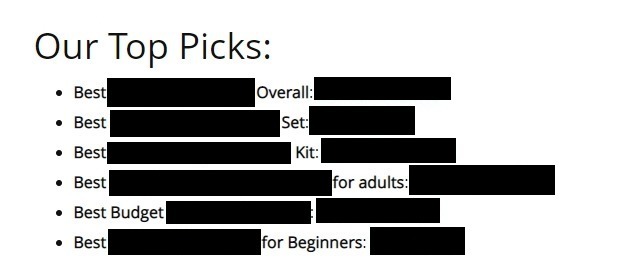
And four weeks later?
Boom.
An increase in ad fees for 5 of the ten pages tested. In these situations, we roll out the winning tests live to the website. For the losing test pages, or pages the under perform, we come up with a new hypothesis, and test again.
This is why split testing is so important.
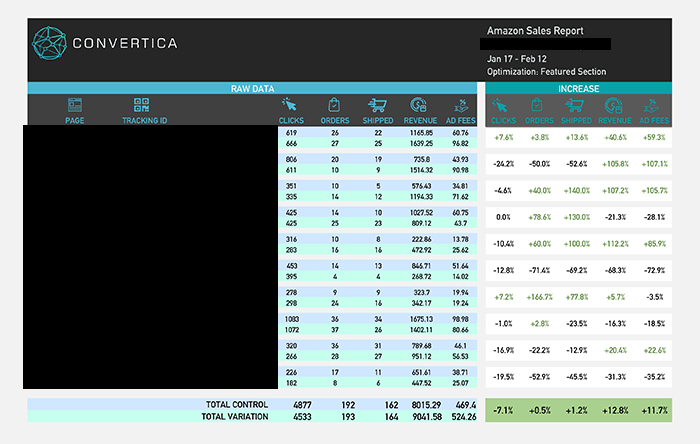
But we were not done yet.
With two more months to work on the site, we decided to optimize the review section of the money pages.
We changed the copy and optimized the call to action button.
Our UX developers quickly went to work and we deployed the new design on the 18th of March.
We tested this on 11 pages.
After 4 weeks, there was a significant increase in click through rates on 4 of the 11 pages.
That’s right. Just for 4 pages.
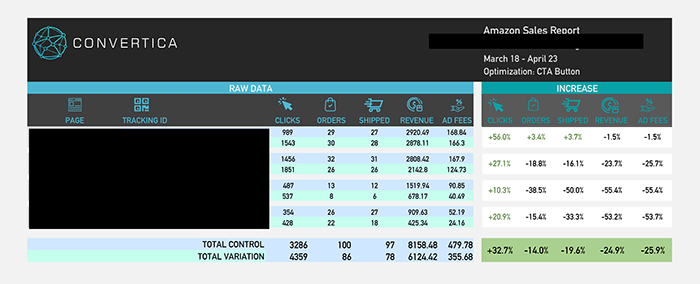
Listen to me right now. This is important.
This will happen a lot in your CRO tests.
Some CRO changes will work on some pages on your site while not on others.
That’s why best practices don’t always work.
Different pages on the same site can vary widely in conversions.
Just think what that means for sites that are in completely different niches!
The point?
You can’t just copy one’s site success.
Do your own tests.
Adding a sticky footer
So far, we had optimized the comparison table, the featured section and the review section.
For the last campaign, we put to test a sticky floating footer bar.
This footer is anchored to the comparison table. But it appears only after scrolling past it.
You’d think that with the many tests we did on these pages, we couldn’t increase conversions even more.
But on the contrary, this humble sticky footer increased the conversions on 3 of the 6 pages we tested.
This meant an extra increase of +65.0% in orders, and +220.9% in ad fees.
Website 2: Site in the sports niche
Let’s move on to the second site. This one is in the sports niche.
This 4-month campaign started in September 2018 and ended on January 2019.
As usual, we first thought about optimizing this site’s comparison table.
But after our initial audit, we agreed that the tables were already well-optimized both on desktop and mobile.
Considering this, we thought we could make more impact on revenue by testing a different element.
So for the first test, we decided to optimize the featured section on top of the page.
The first test
We started the first test on the 11th of September. By the 27th, we saw some good increases on clicks and orders.

That was a very quick win.
So far so good.
Time to refine the test.
As we moved on to the next test, we decided to keep working on the featured section.
To optimize it, we looked more into the Amazon sales data.
This is key if you want to make more money from Amazon affiliates sales.
See.
It’s not just your website that matters in this equation. You also need to be tactical about which product you promote.
So off we went to dig into Amazon sales data. We were on a quest to find the perfect product to feature. This means finding a more expensive item or one that converts well.
For this test, we added a featured section to highlight a more expensive product.
This was what it looked like.
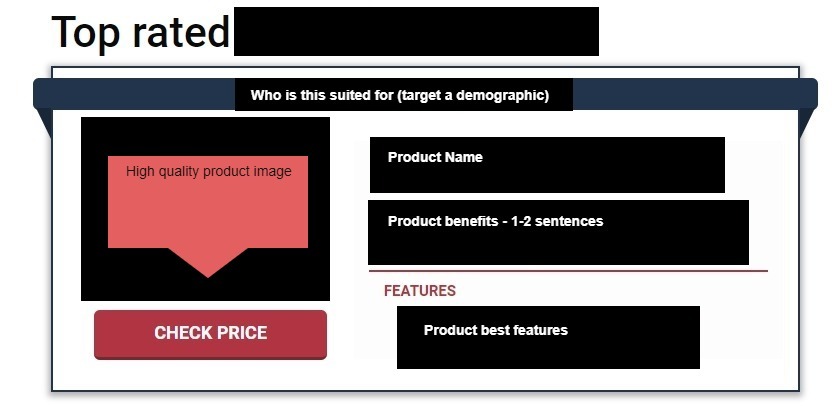
The time we spent looking into the sales data proved to be very good for conversions.
There was an overall increase in clicks and orders for the pages we tested.
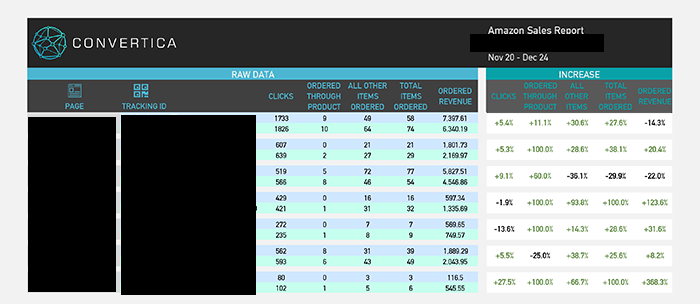
Not bad. Not bad at all.
We were getting great results and we were pretty chuffed.
After this, we wanted to keep doing more tests. But unfortunately we couldn’t.
This is a seasonal site. We had to pause all tests.
We proceeded to add the expensive product version to the featured section. And stopped testing.
We will start it again next time the season comes around.
Website 3: Site in the parenting niche
By the time we started working on this site, we had done CRO on many of yellowHEAD’s portfolio of sites.
They were already familiar with our process and knew what to expect from us. This made things easier and quicker. We didn’t have to explain every single reason behind the changes we made. And they trusted our process to bring the results they wanted.
As Doron from yellowHEAD says,
“We like working with Convertica because they have a deep understanding of customer psychology. This means we are able to provide a better more holistic experience to our readers. They don’t only improve conversion rates. They also work on improving the site’s overall experience. This effectively benefits our SEO efforts.”
So anyway, with this site, we started by testing the comparison tables for the top 10 pages. We coded a design that was well-suited to their theme. The goal was to increase clicks and sales.
After a month of testing, we saw an increase in clicks for almost all of the pages.
At which time the client requested us to roll-out the changes right away. So we stopped testing and continued to roll-out the table design to all the pages.
This allowed us to move on with the next test right away.
No matter how many times you do CRO, sometimes, your hypothesis will be wrong
We’d done other parenting sites before. So when we started the second test, we were confident we would increase conversions.
For the next test, we optimized the comparison table again.
Yes. That one. The one in the first test that was already converting well.
To optimize it further, we added a “Read Review” link which was anchored to the review section and a sticky footer with a CTA anchored to the table.
It flopped.
Well, it was bound to happen sooner or later.
As you can see, our first table design did better against our second one. Also, for the pages with an increase in conversions, this wasn’t consistent for mobile and desktop.
So we decided not to roll out the second design.
And instead, we ate humble pie.
It’s one that happens when you do CRO tests day in and day out.
Sometimes, no matter how many times you’ve done conversion optimization, you still don’t know how it’s going to turn out. It’s only through testing that you’ll know if something works or not.
But let’s look at the bright side.
It wasn’t a complete fail.
We had some data to work with to start our next test.
Moving forward, on the 25th of June, we added the “At A Glance” section. For this test, we only wanted to test click through rates.
After less than a month, this increased overall click-through rates on mobile by 25.3% and by 9.1% on desktop.

And on that high, the campaign for this site ended.
So what can you learn from these three sites?
Here’s what:
Follow the system and it will reward you.
This is how we get things done in Convertica.
And I suggest you do the same when you do CRO on your sites.
Stick to the basics, especially at the start of a campaign. Then keep testing and refining.
Doing this, it’s inevitable that the site’s income will increase.
Can you see what I’m getting at here? Can you see the light now?
No. CRO is not easy.
And you’ll need processes and systems in place to get things in gear.
But.
Look at the revenue increase it generates in a short period of time.
I’m not saying this just because I run Convertica.
I’m saying it because numbers don’t lie.
Here’s what I mean:
Let’s say you’ve got two sites. On one, you work only on increasing traffic and manage a 10 percent increase each month. On the other, you work on both increasing traffic and optimizing conversion. Both traffic and conversion rates increase by 10 percent monthly.
Notice how adding CRO into the mix increases revenue by 3x more than without it.
This is how your site can grow in leaps and bounds.
SEO is great. Having lots of traffic is a dream. But mix that with a CRO campaign run by a highly-experienced team and you’ve got the keys to the kingdom in your hand (insert evil laugh!).
You can hire us to do it for you. Or you can do it yourself in-house. It doesn’t matter.
What I’m saying is if you want to maximize return on investment, it’s sacrilege to ignore CRO.
Conclusion
I hope this has given you valuable insights into how you can grow your business. You’re in the right position to do this now. You just need the right mindset to approach it and the right people to work with.
And if you’re a website property management firm and you want a team of CRO experts to collaborate with, get in touch. Let’s see if we’re a good fit
———————————-
Want to read a section of this article again? Click below:

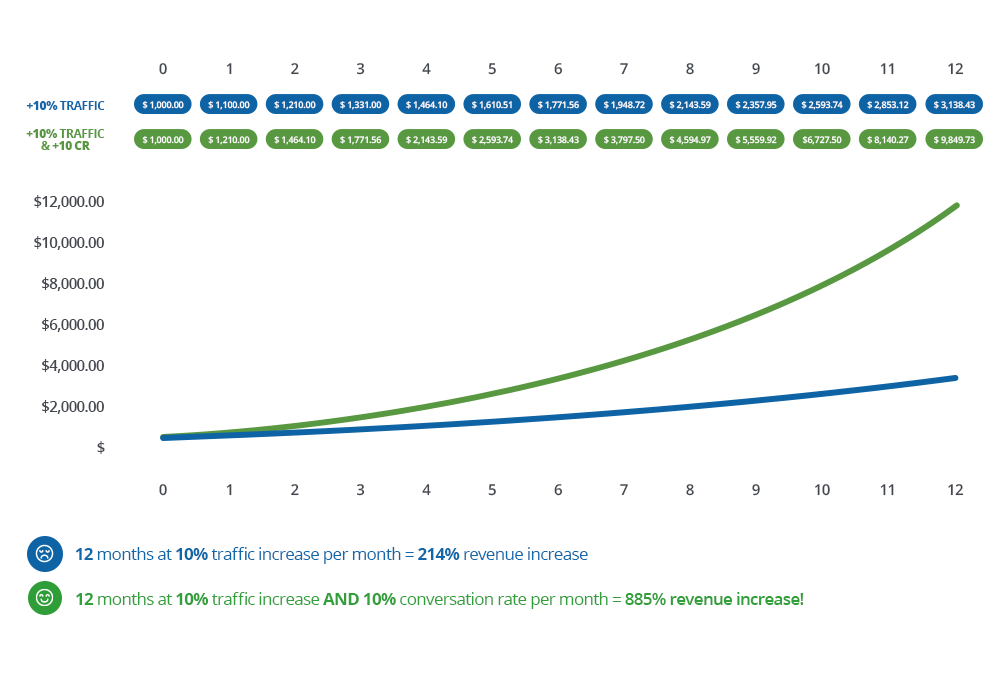
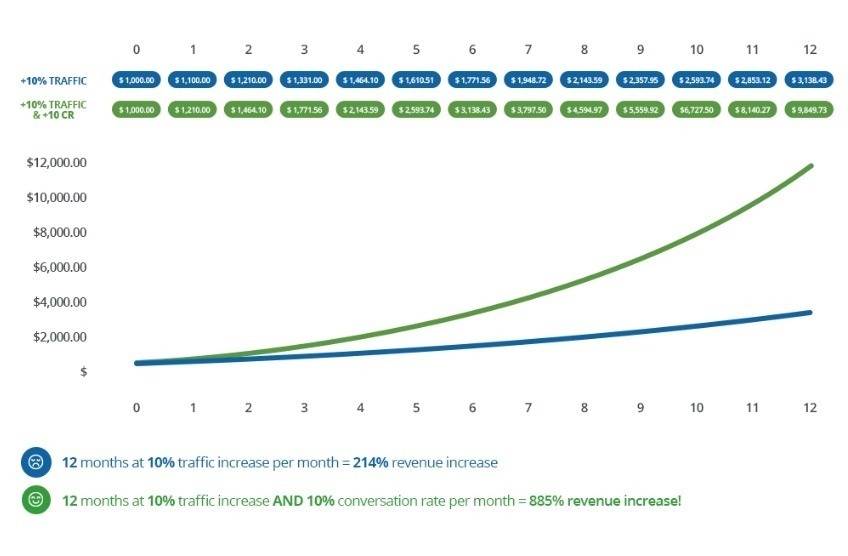







 To get started, please enter your details below
To get started, please enter your details below
0 Comments